| Pages:
1
2 |
TitusGabonicus
Harmless

Posts: 11
Registered: 11-5-2011
Location: UK
Member Is Offline
Mood: No Mood
|
|
'White Gunpowder'
I came across the composition for ‘White Gunpowder‘, around 40 years ago. Thus, I apologise for forgetting the two texts, from which it
originated.
White Gunpowder, at the time was considered, to be a well-known, high explosive.
The stated composition was:-
50% KClO3
25% C12 H22 011
25% K4Fe(CN)6
I have seen references to potassium ferrocyanide, (potassium hexoferrcyanate II) used in explosives manufacture, however, I have found no specific
mention of the term 'White Gunpowder‘, ever since?.
20 grams, deflagrated with an explosive violence, faster than the eye could see. It left no residue. It had considerably more explosive force than a
chlorate/sugar mix, alone. It is highly sensitive to friction.
K4Fe(CN)6 is controlled ( due to potential cyanide production, & I believe, its known use in explosives).
My own adaptation, which I call 'Powder of Prussian', replaces the K+ salt, with ‘Prussian Blue’ paint (ammonium ferriferrocyanate). It has an
intermediate effect between the above composition & no K4Fe(CN)6., at all.
Na4Fe(CN)6 is found in table salt!
If this topic is of any interest, or more specific knowledge be known, your opinions would be appreciated.
|
|
|
hissingnoise
International Hazard
    
Posts: 3940
Registered: 26-12-2002
Member Is Offline
Mood: Pulverulescent!
|
|
"Gunpowder" is a misnomer in this case as chlorate comps have never been used successfully as propellants.
Chlorate and perchlorate comps were used as high explosives in WW1 by both sides when TNT was in short supply.
Sulphur-containing comps are very sensitive to shock and friction and some of these comps had power comparable to straight dynamite.
The mixture above though, seems a bit fuel-rich . . .
And what is C<sub>12</sub>H<sub>22</sub>O<sub>11</sub>?
|
|
|
hissingnoise
International Hazard
    
Posts: 3940
Registered: 26-12-2002
Member Is Offline
Mood: Pulverulescent!
|
|
Augendre's "white gunpowder" gets a short mention here.
Charcoal might be better than sugar in these mixtures . . .
|
|
|
The WiZard is In
International Hazard
    
Posts: 1617
Registered: 3-4-2010
Member Is Offline
Mood: No Mood
|
|
Quote: Originally posted by TitusGabonicus  | I came across the composition for ‘White Gunpowder‘, around 40 years ago. Thus, I apologise for forgetting the two texts, from which it
originated.
White Gunpowder, at the time was considered, to be a well-known, high explosive. |
Whte gunpowder is a misnomer.... it should be called
The White Explosive of Death.
If you check the index of Cunduill's 1895 Dictionary of
Explosives (I own an original copy you can DL yours
from Google.com/books.) You will find 35 explosives
containing Prussiate of potash. All too sensitive
for practical use - they are subject to unexpected
KAFUCKINGBOOM's.
The combination of K chloate and K ferro is extremely sensitive
to impact/friction. More sensitive even then the legendary
K chlorate - sulphur composition. This from —
AA Shidlovskii
Principles of Pyrotechnics (Osnsovy Pirotekhniki, Izd vo
Moscow 1964.)
AD A001859
Foreign Technology Division
Air Force Systems Command
23 October 1974
Byda - there are two ways of obtaing a copy of Shidlovski —
Purchase a copy of either the above or — The Picatinny Arsenal
version, AD 462474 (The AD A001859 one is easier to read.)
From the NTIS.
Purchase a reprise from — American Fireworks News.
www.fireworksnews.com
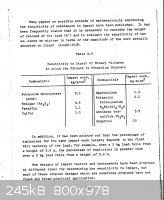 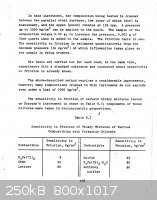
|
|
|
The WiZard is In
International Hazard
    
Posts: 1617
Registered: 3-4-2010
Member Is Offline
Mood: No Mood
|
|
Quote: Originally posted by TitusGabonicus  | | I came across the composition for ‘White Gunpowder‘, around 40 years ago. Thus, I apologise for forgetting the two texts, from which it
originated. |
This from PGII Bulletin #120, July 2000.
I do not agree with Brian Bush's (The only person I know
who uses a typewriter — not Email!) statement —
While "white" or prussiate powders are currently
unfashionable, they are no more hazardous than
many other compositions commonly used in
fireworks."
Compared too suicidal Armstrong's mixture, sure, however,
I would posit that White gunpowder would run neck and neck
with K chlorate and either the red or yellow sulfides of arsenic
for sensitivity.
White gunpowder yields 1 400 hits a Google.com/books.
Before you mix any up ask yourself - If this was such a good
idea — why is it not currently used?
=======
SCATTERED
I WAS once called as an expert to visit a dynamite plant where a new kind of
high explosive was being manufactured instead of the ordinary nitroglycerin
dynamite. It consisted of a mixture of chlorate of potash [potassium chlorate],
sulphur, charcoal and paraffin wax. Its inventor had given it the reassuring name
of Double X Safety Dynamite.
A quarryman in a nearby town had, with his safety-ignoring habitude, attempted
to load a hole with the stuff, using a crowbar as a rammer, with the result that he
set off the charge, and the crowbar went though his head.
This unscheduled eventuation aroused the apprehension of the president of the
company, who was also its backer. He began to grow suspicious about the safety
of the material. Being so much interested, he went with me on my first visit of
inspection.
We left the train at a siding about a mile from the works, and had just started in
their direction when there came a sudden boom and roar, and the earth shook.
Over the powder works there rose a huge column of black smoke, flaring wide
into the sky.
We found a great crater where the mixing house had stood. Three men were
working in the building when the explosion occurred. A fortunate survivor who
had left the place a moment before to go for a bucket of drinking water, was
walking about the crater, apparently searching for something among the
scattered remnants. As we approached him, he sadly said:
"I can't find much of the boys. I guess you'll have to plow the ground if you want
to bury them."
Hudson Maxim Dynamite Stories 1916
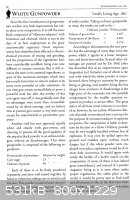 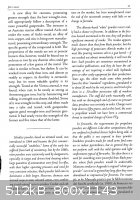 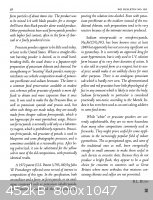
|
|
|
Blasty
Hazard to Others
  
Posts: 107
Registered: 25-7-2008
Member Is Offline
Mood: No Mood
|
|
Quote: Originally posted by TitusGabonicus  | I came across the composition for ‘White Gunpowder‘, around 40 years ago. Thus, I apologise for forgetting the two texts, from which it
originated.
White Gunpowder, at the time was considered, to be a well-known, high explosive.
The stated composition was:-
50% KClO3
25% C12 H22 011
25% K4Fe(CN)6
I have seen references to potassium ferrocyanide, (potassium hexoferrcyanate II) used in explosives manufacture, however, I have found no specific
mention of the term 'White Gunpowder‘, ever since?.
20 grams, deflagrated with an explosive violence, faster than the eye could see. It left no residue. It had considerably more explosive force than a
chlorate/sugar mix, alone. It is highly sensitive to friction.
K4Fe(CN)6 is controlled ( due to potential cyanide production, & I believe, its known use in explosives).
My own adaptation, which I call 'Powder of Prussian', replaces the K+ salt, with ‘Prussian Blue’ paint (ammonium ferriferrocyanate). It has an
intermediate effect between the above composition & no K4Fe(CN)6., at all.
Na4Fe(CN)6 is found in table salt!
If this topic is of any interest, or more specific knowledge be known, your opinions would be appreciated. |
Ammonium compounds should NEVER be mixed with chlorates, as it might lead to the unintentional formation of ammonium chlorate, a very unstable
compound capable of spontaneous self-ignition. Your "adaptation" can thus prove to be more dangerous than the original potassium ferrocyanide
composition.
If you want to tinker with sugar-chlorate mixtures which are faster than the plain ones, and less dangerous than the ferrocyanide ones, stick to
Berge's blasting powder:
http://chestofbooks.com/reference/Henley-s-20th-Century-Form...
It can act as both a black powder-like explosive (if initiated by a fuse) or as a high explosive (if initiated by a shock, such as a blasting cap.)
|
|
|
Ozone
International Hazard
    
Posts: 1269
Registered: 28-7-2005
Location: Good Olde USA
Member Is Offline
Mood: Integrated
|
|
I would handle those...carefully. C12H22O11 corresponds to a hexose disaccharide, most probably sucrose.
O3
-Anyone who never made a mistake never tried anything new.
--Albert Einstein
|
|
|
nitro-genes
International Hazard
    
Posts: 1048
Registered: 5-4-2005
Member Is Offline
|
|
Nitrocellulose is a high explosive as well... 
My guess would be that the composition is deliberately fuel rich to take the edge off for propellant use. Takes pretty strong confinement for
chlorate mitures to go "high order" anyway. Chlorate-sugar is one of the most flame sensitive mixtures IIRC, having one of the lowest ignition
temperatures.
|
|
|
The WiZard is In
International Hazard
    
Posts: 1617
Registered: 3-4-2010
Member Is Offline
Mood: No Mood
|
|
Quote: Originally posted by nitro-genes  | Nitrocellulose is a high explosive as well... 
My guess would be that the composition is deliberately fuel rich to take the edge off for propellant use. Takes pretty strong confinement for
chlorate mitures to go "high order" anyway. Chlorate-sugar is one of the most flame sensitive mixtures IIRC, having one of the lowest ignition
temperatures. |
Takes pretty strong confinement for chlorate mitures to go "high order" anyway. Forsooth!
Extracted from —
Hazards from Salute/Flash/Star Compositions A brief literature survey.
By donald j haarmann aka The WiZ aka The WiZard is In.
Scanned in from: The PGII Bulletin No. 65. May 1989, as I long
ago lost the DOC file.
Studies on Fireworks Compositions. (11) Combustion Characteristics of Piled
Fireworks Compositions: Gerbs, Star Grains and Star Composition as Powder;
Noboru Ishikawa and Masao Kusakabe. "Kogyo Kayaku" 1979, 40(4), 277-82 (In
Japanese)
[Compositions were both K- chlorate and perchlorate.]
This paper reports on work performed by the Japanese government some six
years ago. This report may have served as the model for the ATF test as the
Bureau of Mines has this journal translated on a regular bases, although the
three articles on fireworks that have been published do not appear in the
translated edition. Apparently the Bureau of Mines feels that information on
blowing up fish is more important then preventing accidents in the fireworks
industry!
The following is from the English summery:
Fireworks compositions "were piled on the ground or on a concrete-floor in 5kg,
30kg, 50kg or 100kg and they were ignited with two squibs combined with
powder pasted paper, Yakushi, or for some samples with two detonators. From
37 tests the reaction modes were classified into three: combustion, deflagration
and detonation. Most gerbs showed combustion or deflagration except when a
composition contained fine aluminium, the particle size of which was less then
300 mesh. The reaction of the composition with fine aluminium was promoted
to detonation. The star grains of 100 kg shifted to
detonation from several ten millisecond combustion and in other cases they
showed combustion or deflagration. The star composition powders showed
combustion even with a quantity of 100kg."
The above information was taken from those parts of the paper that were in
English, i.e. the tables. Just what "star grains" are, is not reported in English.
----
Binary mixtures of K chlorate and Red or Yellow arsenic sulfide, red
phosphorus, antimony trisulphide and Na chlorate - table sugar....&c,
need not confinement
|
|
|
Blasty
Hazard to Others
  
Posts: 107
Registered: 25-7-2008
Member Is Offline
Mood: No Mood
|
|
Quote: Originally posted by The WiZard is In  | Fireworks compositions "were piled on the ground or on a concrete-floor in 5kg,
30kg, 50kg or 100kg and they were ignited with two squibs combined with
powder pasted paper, Yakushi, or for some samples with two detonators. From
37 tests the reaction modes were classified into three: combustion, deflagration
and detonation. Most gerbs showed combustion or deflagration except when a
composition contained fine aluminium, the particle size of which was less then
300 mesh. The reaction of the composition with fine aluminium was promoted
to detonation. The star grains of 100 kg shifted to
detonation from several ten millisecond combustion and in other cases they
showed combustion or deflagration. The star composition powders showed
combustion even with a quantity of 100kg." |
Notice that it was the aluminum containing compositions that underwent detonation. Aluminum is a more vigorous reducer.
| Quote: |
Binary mixtures of K chlorate and Red or Yellow arsenic sulfide, red phosphorus, antimony trisulphide and Na chlorate - table sugar....&c,
need not confinement |
I beg to differ on the last class of mixtures. Even black powder can explode without confinement if a large-enough quantity of it is set off at once.
However, most people do not handle the huge amount of it that would be necessary for such a thing to happen. So for all practical purposes no one is
going to blow himself up by handling unconfined black powder. The interesting thing to know would be what is this "critical mass" in the case of
chlorate-sugar mixtures. Since they are more violent than black powder I would expect the minimum quantity for such an unconfined explosion to be
smaller than that for black powder, but by how much?
|
|
|
TitusGabonicus
Harmless

Posts: 11
Registered: 11-5-2011
Location: UK
Member Is Offline
Mood: No Mood
|
|
I am both surprised & impressed at all the replies. I have found each & every one informative & interesting. I thank you all for your
time.
I made ‘White Gunpowder’ once, and once only, at the tender age of 12. Not fully appreciating the many complexities relating to mixing
combustibles, I performed it with ‘dimwit dexterity’, the procedure for (the aptly named), ’White Powder of Death’.
Re-mixing the pre-ground compounds in a pestle & mortar, the mix deflagrated. I remember dropping an empty mortar. The severe burns on my right
hand & forearm, fortunately healed, with little/no scarring. I also learned burns are high on the injury pain scale, and that human flesh / my
hand, smelled like roast pork for two weeks.
As my enthusiasm as a boy for explosives, bordered on compulsive obsessive, my science teacher took me under his wing, in after school syntheses (I
talked him into Styphnic acid, once), though sadly carefully disposed of (probably down the sink?).Respect Mr. Starkey.
This rated high even on my stupidity scale, ‘A thirsting man, questions not the mirage, when the sand tastes as water.
I wish to applaud all the answers, whatever their level, all being pertinent.
Prussian blue, correctly may produce NH4ClO3. I have noticed PB mentioned, and wished to highlight its dangers. I tried to decrease them , by only
using the formula of one said fuel.
The proposal of reducing propellant properties, using stoichiometric fuel rich compositions, may be an interesting line of thought, though not
necessarily with ‘WP’.
.
|
|
|
hissingnoise
International Hazard
    
Posts: 3940
Registered: 26-12-2002
Member Is Offline
Mood: Pulverulescent!
|
|
| Quote: | | Even black powder can explode without confinement if a large-enough quantity of it is set off at once. |
A large mass of BP will explode by 'self-confinement' - the deflagration is greatly accelerated by the insulating properties and the compressed
condition of the powder within the bulk . . .
|
|
|
The WiZard is In
International Hazard
    
Posts: 1617
Registered: 3-4-2010
Member Is Offline
Mood: No Mood
|
|
Quote: Originally posted by Blasty  |
I beg to differ on the last class of mixtures. Even black powder can explode without confinement if a large-enough quantity of it is set off at once.
However, most people do not handle the huge amount of it that would be necessary for such a thing to happen. |
Lucky guess.
Title: TNT Equivalency of Black Powder. Volume II. Appendices.
Personal Author: Napadensky,Hyla S Swatosh,James J , Jr
Corporate Author: IIT RESEARCH INST CHICAGO ILL
Source Code: 175350
Page Count: 128 page(s)
AD Number: ADA044444
Report Date: 01 SEP 1972
Distribution Code: 01 - APPROVED FOR PUBLIC RELEASE 23 - AVAILABILITY: DOCUMENT PARTIALLY ILLEGIBLE
Report Classification: U - Unclassified
Collection: Technical Reports
View TR Citation | View Full Text pdf - 2 MB
Title: TNT Equivalency of Black Powder. Volume I. Management Summary and Tech...
Personal Author: Napadensky, Hyla S Swatosh, James J , Jr
Corporate Author: IIT RESEARCH INST CHICAGO IL
Source Code: 175350
Page Count: 80 page(s)
AD Number: ADA044443
Report Date: 01 SEP 1972
Distribution Code: 01 - APPROVED FOR PUBLIC RELEASE
Report Classification: U - Unclassified
Collection: Technical Reports
Sorry to say — only Part 1 is available form www.dtic.mil. I own
a copy of Part II, however, it is - at 128 pages - tooooo long to scan.
Forgive me for it do be time for me to repost this reminder —
Deficiencies in the Testing and Classification of Dangerous Materials.
J.E. Settles
Annals New York Academy of Sciences, Volume 152, Art.1.
Pages 199-205.
1968
"A total of 103 persons suffered injuries in the 81 accidents. Seventy-eight
fatalities resulted from these 81 accidents. "Of the 81 accidents included in this
analysis, it was concluded that 23 of them involved only fire, and the principal
hazard was radiant heat. It was further concluded that 44 of the accidents
involved both fire and explosion. From information available, it seemed justified
to assume that no more then 14 of the accidents were characterized by
supersonic shock waves that would fall within the accepted definition of
"detonating" reactions.
"The 14 accidents in which detonating forces were present resulted in injuries
to 35 persons and 34 fatalities. It appears from the information available that
only one of these 34 deaths resulted from the blast overpressures that are
associated with a detonating reaction. However, this one fatality was not the
result of blast damage to human tissue. Rather, the blast pressure caused this
individual to be propelled as a projectile. The other 33 persons who died in these
14 accidents were located at points where the density of flying fragments, and in
some cases, the lethal searing of radiant heat were so great that their deaths
were certain, even though there had been no blast effects.
A SERIOUS AND DISTURBING INCONSISTENCY IS RELATED TO THE PRACTICE
OF ACCEPTING A "FIRE HAZARD ONLY" LABEL ON REACTIONS OF SUCH
VIOLENCE AND DESTRUCTIVE ENERGY AS MEDIUM-VELOCITY DETONATION,
LOW-VELOCITY DETONATIONS, HIGH-RATE EXPLOSIONS, MEDIUM-RATE
EXPLOSIONS, LOW-RATE EXPLOSIONS, AND EVEN REACTIONS THAT DON'T
EXPLODE AT ALL BUT KILL PEOPLE BY BURNING THEM TO DEATH.
|
|
|
nitro-genes
International Hazard
    
Posts: 1048
Registered: 5-4-2005
Member Is Offline
|
|
Look Wizzie, you can babble all you want about 100kg+ accidents, the main question was about gram usage as propellant. Anyway, a chlorate-sucrose
mixture, especially when over fueled like in the original composition, is going to need heavy confinement to go "high order". I've made such mixtures
and their rate of deflageration and need for confinement is RELATIVELY tame. I was refering to chlorate mixtures as in chlorate-sucrose-mictures was
was posted above, which wasn't smart. Point two is that the peak pressure of chlorate mixtures rarely make it above 1 kbar in these amounts, quite
similar actually to black powder. Even well confined chlorate+aluminum will not disintegrate a steel pipe, rather tear it or split it open.
Storage of such mixtures is however not wise due to the chlorate, make small amounts, use diapering method, do not mic with sulfur, (Insert standard
shit about chlorates) etc etc, bla bla bla...
[Edited on 17-5-2011 by nitro-genes]
|
|
|
The WiZard is In
International Hazard
    
Posts: 1617
Registered: 3-4-2010
Member Is Offline
Mood: No Mood
|
|
Quote: Originally posted by nitro-genes  | Look Wizzie, you can babble all you want [snip]
Even well confined chlorate+aluminum will not disintegrate a steel pipe, rather tear it or split it open. |
My compliments to your pipe.
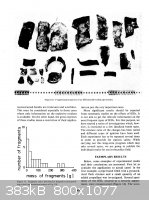 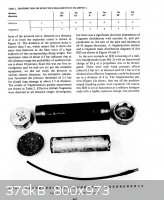 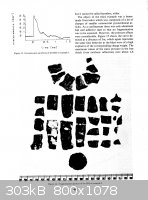 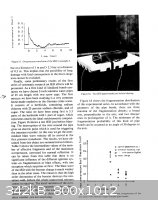 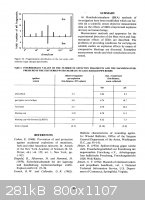
---------
Extracted from :—
RED PHOSPHORUS -- BRIDE OF FRANKENSTEIN
By Donald J Haarmann aka The WiZard is In.
American Fireworks News May, 1991
I have it in mind to make up a series of T-shirts proclaiming; I survived
Armstrong's mixture! with a box that could be checked proclaiming With all my fingers
intact!! There can be NO DOUBT that this combination is one of the five most
dangerous pyrotechnic compositions known. More than a few have come to regret
tempting the wrath-of-the-God's by compounding it!!! Perhaps the most famous victim
(excluding your fingers-still-intact author) of this infernal combination is Donald Sisco,
better known as "Kurt Saxon" of "Poor Man's James Bond" fame. The following is
quoted from his book:
"The photograph shows a spatula which had been used to stir a mixture of about
1/2 half ounce of potassium chlorate and a bit of red phosphorus. The mixer was
ignorant of the fact that these chemicals together, stirred dry, will detonate
spontaneously.
"The resulting blast kneaded the spatula out of shape. It atomized the first 3/4 inch of
the bone handle and split the rest. It shattered the plastic mixing bottle.
"The fingers holding the bottle had the flesh blown off the bones and the bare
bones had to be amputated. The palm of the hand was turned to hamburger and its
inner bones were smashed.
"The hand holding the spatula was undamaged except for particles of plastic
bottle which pierced the skin."
djh
----
A little learning is a dangerous thing;
Drink deep, or taste not the Pierian spring:
There shallow draughts intoxicate the brain;
And drinking largely sobers us again.
Alexander Pope
1688-1744
|
|
|
nitro-genes
International Hazard
    
Posts: 1048
Registered: 5-4-2005
Member Is Offline
|
|
2.5 effective fragments (Not to be confused with the pictures earlier in the article) for 50 grams of chlorate-sugar by fuse ignition in a 3cm sphere
(Steel type not specified, probably not weapons grade)... Have you considered the results with blackpowder ARE quite similar? (Which was my point)
Please, think before writing a 4 hour post, get a life...
[Edited on 17-5-2011 by nitro-genes]
|
|
|
The WiZard is In
International Hazard
    
Posts: 1617
Registered: 3-4-2010
Member Is Offline
Mood: No Mood
|
|
Quote: Originally posted by nitro-genes  | 2.5 effective fragments (Not to be confused with the pictures earlier in the article) for 50 grams of chlorate-sugar by fuse ignition in a 3cm sphere
(Steel type not specified, probably not weapons grade)... Have you considered the results with blackpowder ARE quite similar? (Which was my point)
Please, think before writing a 4 hour post, get a life... |
Sorry my scanner ate my life.
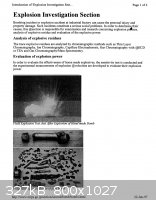
Sez on the back.
Upper: Black powder (Explosion velocity 240 m/s)
Lower: Chlorate explosive (Explosion velocity 2,700 m/s)
This link no longer works. I suspect when I DL'd this June 1997
someone forgot to close the door!
Explosion Investigation Section | Second Department of Forensic
Evaluation of explosion power. Detonation velocities, fragment
velocities, and blast pressure have been obtained to evaluate the
power of explosives and ...
www.npa.go.jp/nrips/en/second/explosion.html - Cached
----
I have asked the President of my Fan Club to forward you a
membership application.
|
|
|
Blasty
Hazard to Others
  
Posts: 107
Registered: 25-7-2008
Member Is Offline
Mood: No Mood
|
|
A couple of interesting videos which show that making chlorate-sugar mixtures explode (without the aid of a shock) is not as easy as some would think.
Much like black powder, you need strong confinement to achieve this, otherwise they will tend to just blow the lid/plug or just burst through the
weakest part of the container instead of instantaneously bursting the whole container to pieces:
http://www.youtube.com/watch?v=O4OFaxsT8Hk
Notice that part of the mix burned outside the container after the partial explosion. Not a truly successful attempt. They keep trying at another
location:
http://www.youtube.com/watch?v=IJXKVXL7RVE&feature=relat...
Their second and third attempt are truly successful, instantaneous violent explosions, the last one sending that gas bottle flying through the air.
|
|
|
nitro-genes
International Hazard
    
Posts: 1048
Registered: 5-4-2005
Member Is Offline
|
|
People like wizzard, groundpndr and the same make that I rarely visit this forum nowadays, make such huge, dull written posts, that even scrolling
past them is too much of an effort. Spending hours and hours on making intimidating looking post full of copy-pasted material from the net that is
moreover usually totally unrelated to the topic in question, in order to force their ill conceived ideas upon others in the most irritating way
possible. You can pick out the scientist directly, wondering about processes, asking the right questions and wanting to explore these ideas by
practice, it is the very reason why this forum was founded, two sided communication ;-). The President of my fan-club line says it all, nothing but a
joke...
Lets take it a step further, those who ever made chlorate-benzoate mixtures know how notoriously fast these are, almost able to self confine in 25
gram amounts. However... there are people that make working rockets out of them, HOW CAN THIS BE?! Good question!
Same goes for nitro-cellulose, I could claim it to be unsafe for use in a firearm, posting a list of all the accidents during manufacture, storage,
pointing to its unstability and ability to go high order under the right conditions, flame sensitivity, but it doesnt prove a damn thing, since every
modern firearm uses it... Could there be other factors?! Good question!
Details about the way of ignition, steeltype, composition and packing density are missing btw...
[Edited on 19-5-2011 by nitro-genes]
|
|
|
Blasty
Hazard to Others
  
Posts: 107
Registered: 25-7-2008
Member Is Offline
Mood: No Mood
|
|
The one for black powder seems a bit too low. The usual figure for it seems to be around 460 m/s, but under certain conditions it can go as high as
914 m/s (see Herbert L. Nichols, David Day, "Moving The Earth: The Workbook of Excavation", page 9.27)
|
|
|
The WiZard is In
International Hazard
    
Posts: 1617
Registered: 3-4-2010
Member Is Offline
Mood: No Mood
|
|
Quote: Originally posted by nitro-genes  | | People like wizzard, groundpndr and the same make that I rarely visit this forum nowadays, make such huge, dull written posts, that even scrolling
past them is too much of an effort. Spending hours and hours on making intimidating looking post full of copy-pasted material from the net that is
moreover usually totally unrelated to the topic in question, in order to force their ill conceived ideas upon others in the most irritating way
possible. You can pick out the scientist directly, wondering about processes, asking the right questions and wanting to explore these ideas by
practice, it is the very reason why this forum was founded, two sided communication ;-). The President of my fan-club line says it all, nothing but a
joke... |
Have you considered taking your rage to the next level?
Burn down all the library's full of dull/uninteresting (to you) books.
|
|
|
nitro-genes
International Hazard
    
Posts: 1048
Registered: 5-4-2005
Member Is Offline
|
|
There is no point in libraries if you are not able to actually read and interpret what is there on paper, that was my point...
And yes, I agree with Blasty, your blackpowder figures are lower than I seem to remember as well.
[Edited on 19-5-2011 by nitro-genes]
|
|
|
IndependentBoffin
Hazard to Others
  
Posts: 150
Registered: 15-4-2011
Member Is Offline
Mood: No Mood
|
|
Oy, come on dude chill out. I for one find WiZard's posts very informative and helpful. I have followed up and read some of this references cited and
learn much even by just lurking on the threads he posts in.
Personally I wish there were more folks like WiZard on this and other forums. He provides his valuable knowledge for free as a contribution to the
Sciencemadness community and if you do not like what he says, just scroll on, no one is forcing you to read what he says and it is there for free for
anyone to appreciate.
As someone who has left academia with its institutional access to delightful technical reading material I find alternative sources of such technical
material to be utterly delightful 
I can sell the following:
1) Various high purity non-ferrous metals - Ni, Co, Ta, Zr, Mo, Ti, Nb.
2) Alkex para-aramid Korean Kevlar analogue fabric (about 50% Du Pont's prices)
3) NdFeB magnets
4) High purity technical ceramics
|
|
|
nitro-genes
International Hazard
    
Posts: 1048
Registered: 5-4-2005
Member Is Offline
|
|
Sure, I couldn't agree more...
It's not that I disagree to posting (and reading!) references and reading material, not the slightest!  I've collected more than a 1000 articles, patents, video's, web information, and about 30 books myself. Ive done a
fair share myself. I've collected more than a 1000 articles, patents, video's, web information, and about 30 books myself. Ive done a
fair share myself.  Though, some half-hearted reading on a topic for an evening
is not making you an expert...but even that is not a problem in itself. Note that I tend to use words as, presumably, supposedly, IIRC, likely, could
it be, etc when making a post, that is because subtle changes in conditions, materials etc can greatly influence the outcome, nothing in nature is
fixed or black and white. Wizzard clearly had gotten the idea that every chlorate mixture is prone to explode and doesn't need any confinement to do
so. I have actually made chlorate-sugar mixtures, and boy, they are a long way from flash or armstrong mixtures by which he compared them. Yet, he
makes a zero tolerance policy of what he thinks is true in an irritating way by posting huge amounts of vagely-topic-related reference material and
twisting facts for which he didn't gave any references. Though, some half-hearted reading on a topic for an evening
is not making you an expert...but even that is not a problem in itself. Note that I tend to use words as, presumably, supposedly, IIRC, likely, could
it be, etc when making a post, that is because subtle changes in conditions, materials etc can greatly influence the outcome, nothing in nature is
fixed or black and white. Wizzard clearly had gotten the idea that every chlorate mixture is prone to explode and doesn't need any confinement to do
so. I have actually made chlorate-sugar mixtures, and boy, they are a long way from flash or armstrong mixtures by which he compared them. Yet, he
makes a zero tolerance policy of what he thinks is true in an irritating way by posting huge amounts of vagely-topic-related reference material and
twisting facts for which he didn't gave any references.
|
|
|
hissingnoise
International Hazard
    
Posts: 3940
Registered: 26-12-2002
Member Is Offline
Mood: Pulverulescent!
|
|
Sodium chlorate contains significantly more oxygen than the potassium salt and is much more soluble.
Its hygroscopicity is problematic in damp climates but a papier-mâché of toilet tissue made by immersion in a fairly concentrated solution of the
chlorate, compressed carefully while still damp and dried slowly is a quite potent deflagrant, though slower than BP, and cap-sensitive at
medium compression . . .
Its major drawback is its very high friction sensitivity!
|
|
|
| Pages:
1
2 |
|